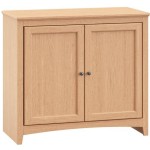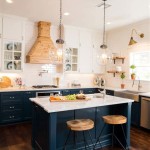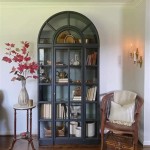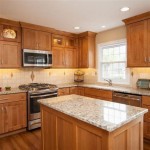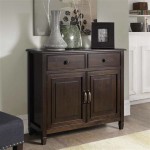What Is The Depth of Kitchen Cabinets?
The depth of kitchen cabinets is a crucial factor to consider when designing or renovating a kitchen. It significantly impacts the functionality, storage capacity, and overall aesthetics of the space. Understanding the different depths available and their implications for the overall kitchen layout is essential for maximizing both storage and usability.
Standard Kitchen Cabinet Depths
The most common depth for kitchen cabinets is 12 inches, often referred to as "standard depth." This depth is suitable for most kitchens and provides ample storage space for standard cookware, dishes, and other kitchen essentials. However, it's important to note that this measurement typically refers to the cabinet's interior depth, not the overall depth including the door and frame. The actual exterior depth can range from 13 to 14 inches, depending on the cabinet's construction.
Another popular depth for kitchen cabinets is 18 inches. This depth, also known as "deep cabinets," is ideal for maximizing storage capacity, especially for larger items like pots, pans, and appliances that may not fit in standard-depth cabinets. However, deeper cabinets can create challenges in terms of accessibility, requiring users to reach further into the cabinet to retrieve items at the back. They can also make the kitchen feel more cramped if not designed carefully.
Some cabinet manufacturers offer shallower options, such as 10-inch cabinets. These shallower cabinets are generally used for specific purposes, such as under-sink storage or as an upper cabinet flanking a range or refrigerator, where a deeper cabinet would be cumbersome or visually disruptive. They can also be a practical choice for smaller kitchens where maximizing available floor space is a priority.
Factors Influencing Kitchen Cabinet Depth
Several factors influence the appropriate cabinet depth for a particular kitchen. These include:
*
Kitchen Size:
The size of the kitchen significantly impacts the optimal cabinet depth. In smaller kitchens, shallower cabinets may be more suitable to avoid making the space feel cluttered. Larger kitchens, on the other hand, can accommodate deeper cabinets without sacrificing walkability. *Layout and Workflow:
The layout and workflow of the kitchen also play a crucial role in choosing the right cabinet depth. For example, a galley kitchen might benefit from shallower cabinets to maximize walk space, while a U-shaped kitchen could accommodate deeper cabinets without compromising accessibility. *Personal Preferences and Needs:
Ultimately, the ideal cabinet depth is a matter of personal preference and the specific needs of the household. A family that loves to cook and entertain might prefer deeper cabinets for increased storage capacity, while a family with limited counter space might opt for shallower cabinets to maximize countertop area.The Impact of Cabinet Depth On Kitchen Functionality
The depth of kitchen cabinets directly impacts the functionality and usability of the space. Here are some key considerations:
Accessibility:
Deeper cabinets can be more challenging to access, especially for items stored at the back. This can lead to wasted space and frustration if items are not easily accessible. However, with proper organization, such as pull-out shelves, lazy Susans, and other smart storage solutions, even deeper cabinets can be made easily accessible. Shallower cabinets, on the other hand, offer better accessibility, allowing users to reach all items easily.
Storage Capacity:
Deeper cabinets offer greater storage capacity, making them ideal for kitchens with high storage needs. However, shallow cabinets can still provide ample storage for smaller kitchens or those with less demanding storage requirements. It is important to consider the specific items you plan to store and choose a depth that accommodates them effectively.
Aesthetics:
While primarily a functional aspect, cabinet depth also impacts the aesthetics of the kitchen. Deeper cabinets can make the space feel more spacious and comfortable, especially when combined with light color schemes and proper lighting. However, shallow cabinets can help create a clean, modern look, particularly in smaller kitchens.
In conclusion, the depth of kitchen cabinets is a critical aspect of kitchen design that directly affects the functionality, storage capacity, and aesthetics of the space. Understanding the different depths available, their implications for accessibility and organization, and the influencing factors such as kitchen size and personal needs is essential for maximizing kitchen functionality and creating a beautiful and efficient workspace.

Icymi Kitchen Cabinet Depth Dimensions Kitchencabinetsdimensions Upper Cabinets Wall

Kitchen Cabinet Depth 2024 Upper Cabinets Dimensions Wall

Kitchen Cabinet Sizes What Are Standard Dimensions Of Cabinets

What Is The Standard Depth Of A Kitchen Cabinet Dimensions Cabinets Height Wall Units

Proper Depth For Frameless Cabinets

Kitchen Cabinet Dimensions

N Standard Kitchen Dimensions Renomart

3ds Max Design Tutorials Using Basic Polygon Editing To Create A Base Cabinet
What Is A Standard Kitchen Counter Depth Quora
Guide To Kitchen Cabinet Sizes And Dimensions

